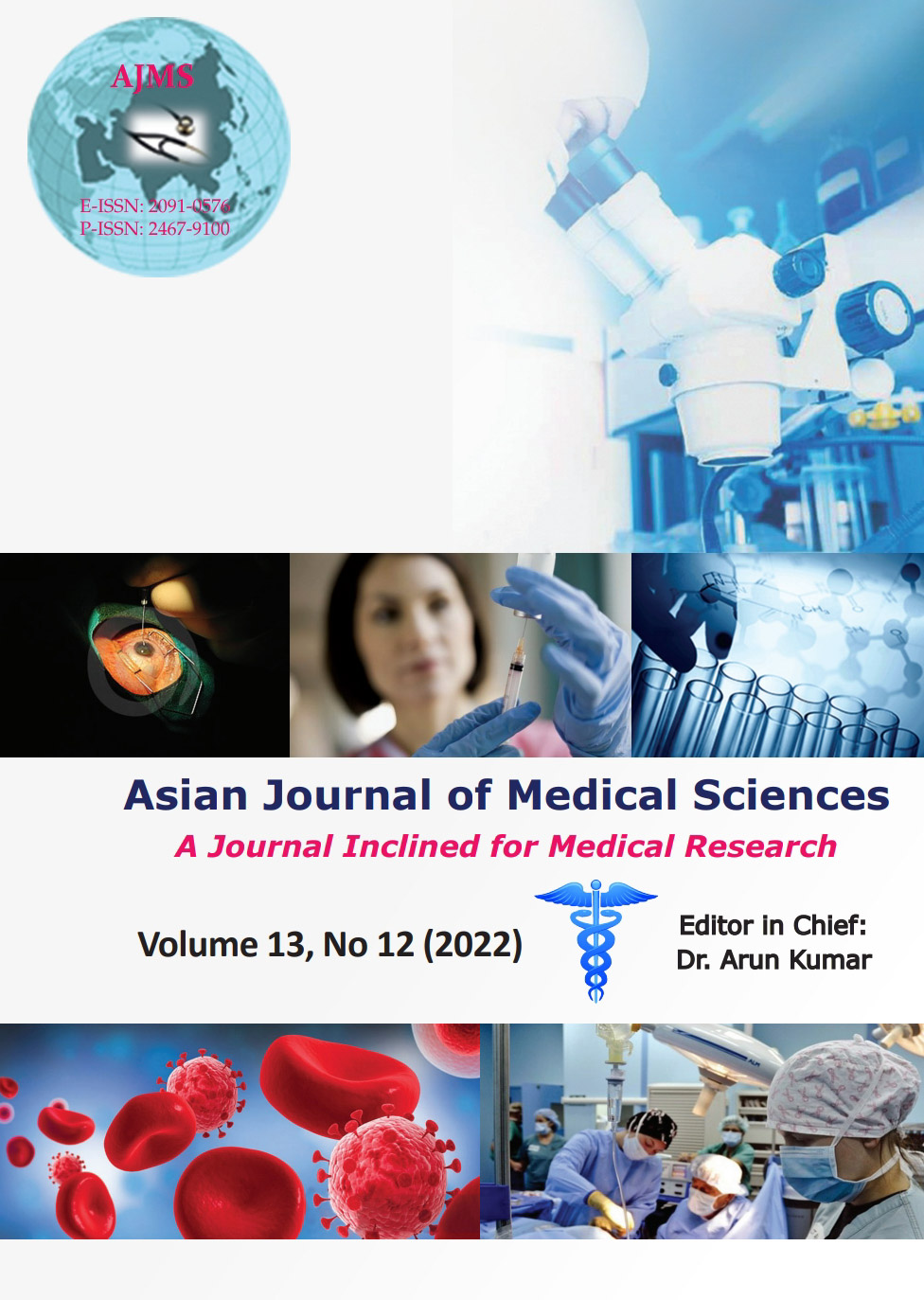Analysis of burden and outcomes of anti-tuberculosis therapy-induced adverse drug effects at a tertiary care center
Keywords:
Adverse drug reactions; Anti tuberculosis therapy; Medicine; Western IndiaAbstract
Background: Tuberculosis (TB), one of the most ancient diseases known to mankind, is one of the ten major causes of mortality worldwide. Combinations of antibiotics, called anti-TB therapy (ATT), are given for a period of six months or more as treatment.
Aims and Objectives: The aim of this study was to assess the incidence of adverse drug reactions (ADRs), clinical profile, severity and causality among the admitted patients taking ATT in a tertiary care hospital.
Materials and Methods: This was a hospital-based, prospective, observational and non-interventional cohort study undertaken in the General Medicine wards of the hospital. This study was conducted from June 2017 to December 2018. The Patients’ data was recorded using a structured ADR reporting form. The baseline parameters, medical history and details of underlying diseases, clinical data, characteristics of ADRs and details of medication responsible for ADRs as well as medication for treatment of ADRs were recorded. The data was analyzed using descriptive statistics with the Statistical Packages for the Social Sciences (SPSS) version 26.0 software.
Results: Out of the 164 patients admitted due to ADRs within the study period, 45 (27.4%) developed ADRs due to anti-TB treatment. Most ATT-related ADRs involved the liver (n=39). The severity of ADR was found to be mild in two patients (4.4%), moderate in 28 patients (62.5%) and severe in 15 patients (33.3%). 16 patients (35.6%) completely recovered, 23 patients (51.1%) were still recovering (at the time of the analysis of the data), one patient (2.2%) did not recover and five patients (11.1%) had a fatal outcome. The presence of systemic comorbidities and polypharmacy was found to be a significant risk factor associated with ATT associated ADRs.
Conclusion: ATT is not without its side effects. About 27.4% of the patients on ATT in our study developed ADRs, a few resulting in fatality. Educating the patients about possible ADRs associated with ATT at the time of prescription can improve patient compliance and strengthen the doctor-patient relationship. Early diagnosis and treatment of ADRs associated with ATT is paramount. This requires a better surveillance system, which India is in a dire need for.
Downloads
Downloads
Published
How to Cite
Issue
Section
License
Copyright (c) 2022 Asian Journal of Medical Sciences

This work is licensed under a Creative Commons Attribution-NonCommercial 4.0 International License.
Authors who publish with this journal agree to the following terms:
- The journal holds copyright and publishes the work under a Creative Commons CC-BY-NC license that permits use, distribution and reprduction in any medium, provided the original work is properly cited and is not used for commercial purposes. The journal should be recognised as the original publisher of this work.
- Authors are able to enter into separate, additional contractual arrangements for the non-exclusive distribution of the journal's published version of the work (e.g., post it to an institutional repository or publish it in a book), with an acknowledgement of its initial publication in this journal.
- Authors are permitted and encouraged to post their work online (e.g., in institutional repositories or on their website) prior to and during the submission process, as it can lead to productive exchanges, as well as earlier and greater citation of published work (See The Effect of Open Access).




